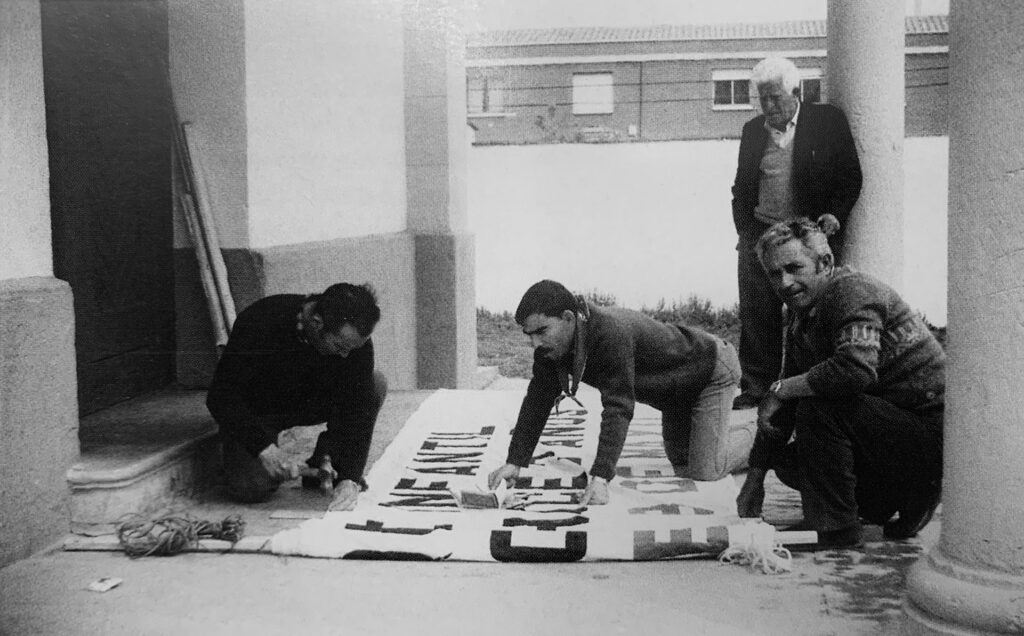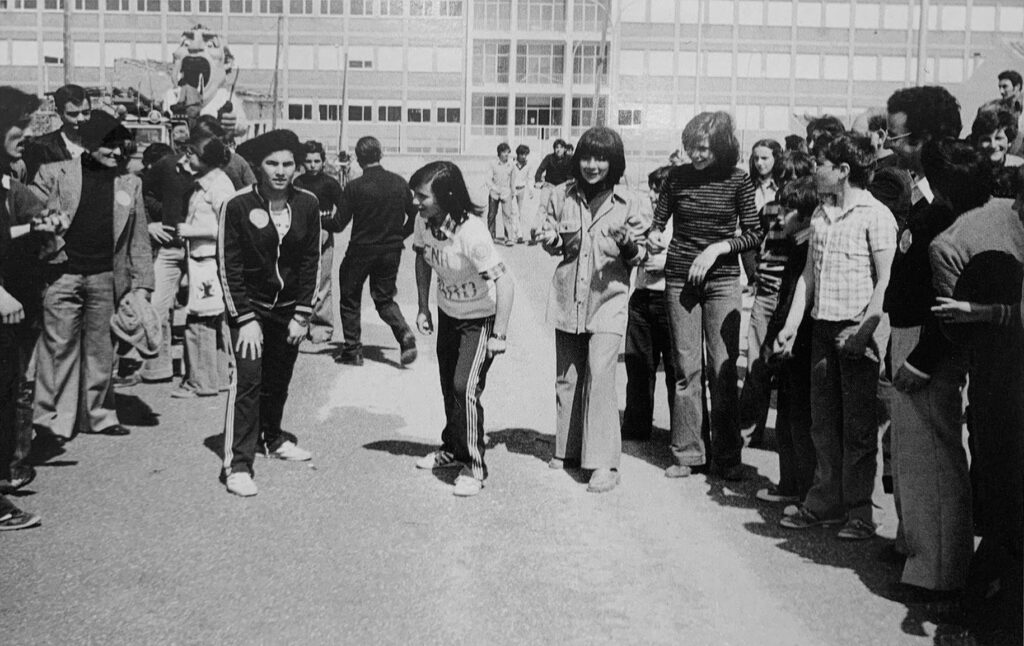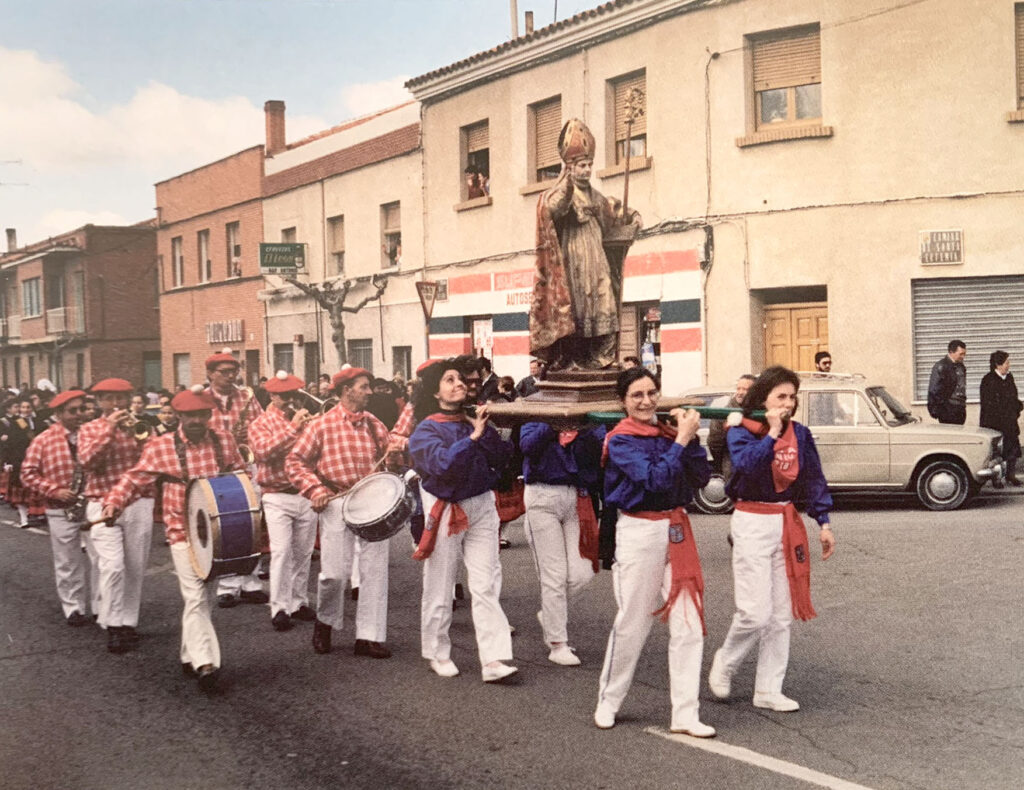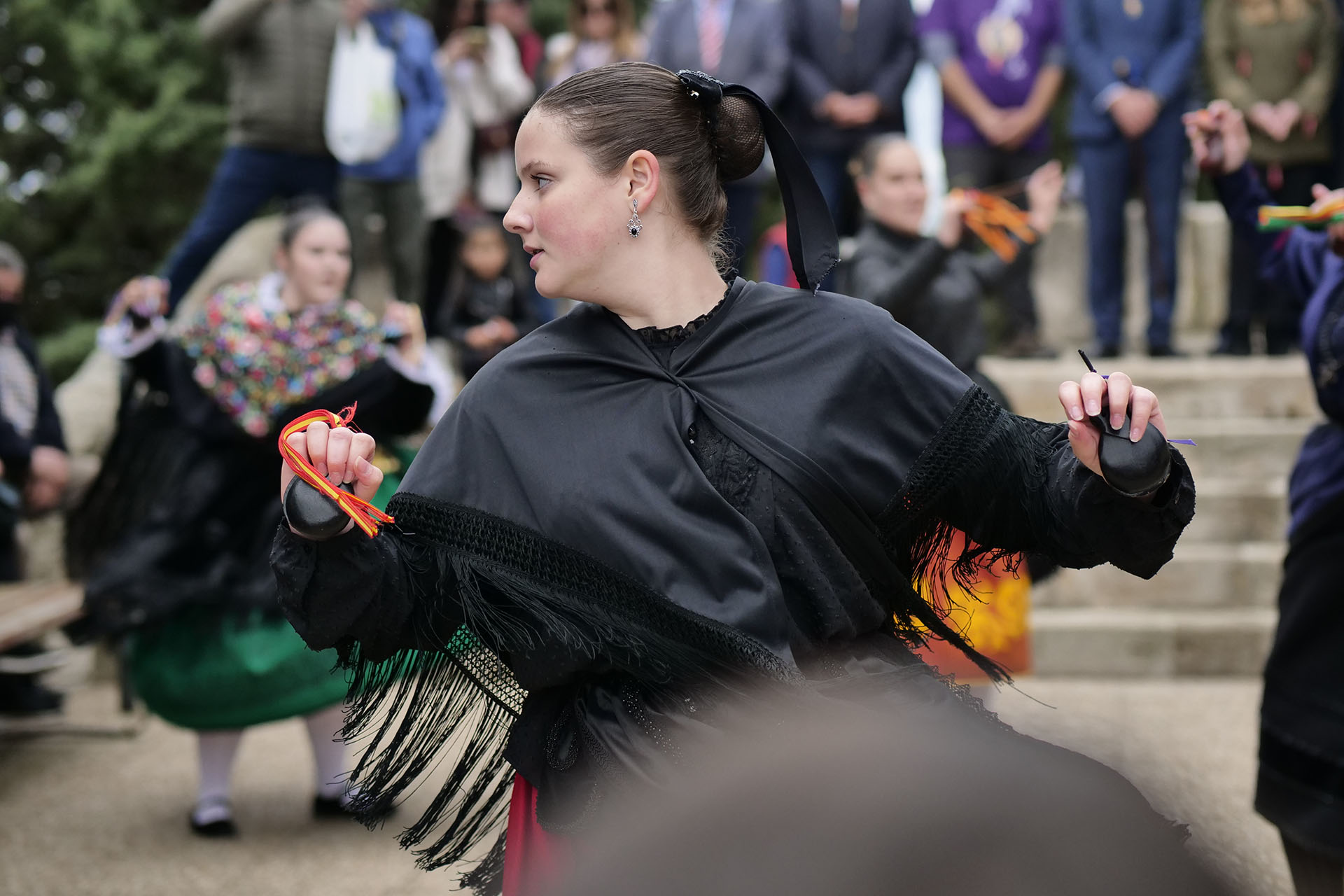Association
Neighbourhood
Association
Neighbourhood
A neighbourhood that is a symbol of the city
2 May 1976
This date was a turning point for the neighbourhood around the Otero Christ. The streets clearly showed the area had been forgotten and abandoned. The mud spilled out into the streets, there were few street lights and no phone booths.
It was nearly time for the pilgrimage and an organised group of young people decided to take action, calling for changes, with the support and protection of the parish priest, Father Lucinio. They prepared pamphlets to get everyone involved and went up into the statue and managed to hang a huge sign from its eyes. Plus, that day they decided to return all the bags of bread and cheese tossed from the balcony to the authorities.

Days after the protest, the City Council put two people in charge of finding solutions to the issues the protests had called attention to. During this process, it became necessary to legally channel and manage all these requests. So, following the example of bigger cities, the first neighbourhood association was born in Palencia, with Miguel Ángel Lacarra as its first president.
The association was extremely strong and dynamic from the start, aiming to continue promoting solidarity, participation and dialogue in the area, as well as making the St. Turibius pilgrimage the core of its neighbourhood festivities.
The St. Turibius festivities always kick off the Sunday before the throwing of the bread and cheese with an event that dates back to 1981 called ‘la sardinada’, in which people gather in the old church esplanade to eat sardines. As expected, its popularity among residents has made this event a yearly staple and over time it became a ‘torreznada’, with people gathering to eat fried pork belly chunks. Other elements were added later, such as the ‘cohetón’, or firework that kicks off the festivities, the opening proclamation, the ‘Cristo de la Alegría’ and ‘Cristo de la Tristeza’ awards ceremony and performances by local dance troupes.
Other activities fill the neighbourhood with joy all week long, mainly children’s activities, sports, honouring the elderly and the famous outdoor night-time dances and fireworks displays at the feet of the Christ.

The importance of
brotherhoods in the celebrations

At that year’s Sunday pilgrimage, the parish priest of St. Ignatius and St. Agnes blessed the brotherhood’s banner before kicking off the votive procession, led that year by the women of the brotherhood carrying the figure.
Since then, the pilgrimage has become one of the city’s most important celebrations, fuelled by its popularity and promoted by the city departments, El Cristo Neighbourhood Association and the St. Turibius brotherhood.
2005, Celebration of
Regional Tourist Interest
Thanks to its longevity and uniqueness, along with the increased budget set aside for festive events attracting regional attention to the celebration, the pilgrimage was declared a Celebration of Regional Tourist Interest in May 2005.
